Festivals holds specific importance in different cultures. The immense significance of festivals lies in the fact that it brings together the entire country.
They teach a feeling of love, harmony, peace, and brotherhood among the citizens of the country.
Apart from generating the atmosphere inside the country, festivals also send a message to the outsiders. It represents the cultural and national identity of a country to others
Nepal is one such country which houses several traditional communities. There are more than 120 ethnic groups in Nepal, following their own culture, tradition and rituals And each of these communities has maintained their traditions and beliefs for centuries.
Nepal is known not only for its famous landscape and natural beauty but also for its cultural heritage.
Each community shows equal respect and dignity for the festivals of other cities as well. Among the pool of famous festivals, there exists some which are of prime importance to the people of Nepal.
1. Dashain
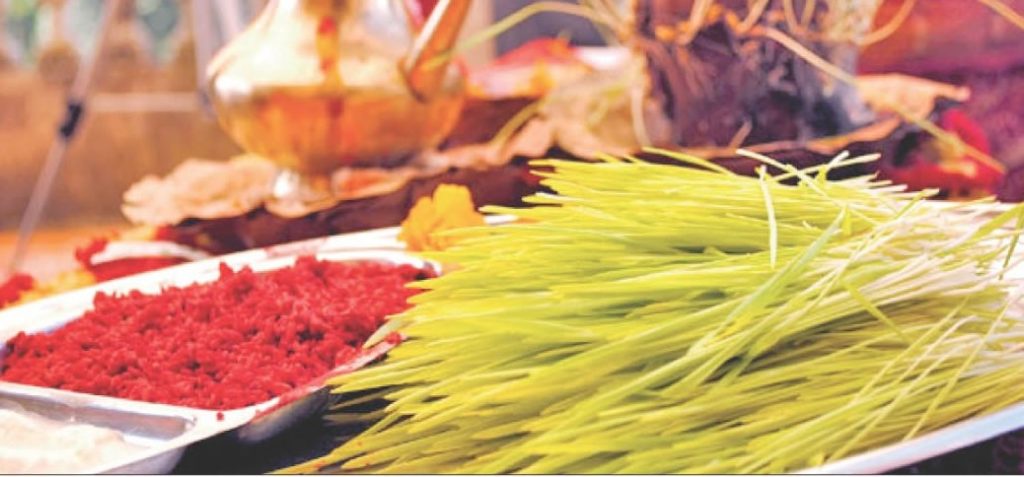
The festival is celebrated to mark the victory of good over evil. The celebration lasts for 15 days during which the people worship 8 Tantrik Goddesses and nine avatars of Goddess Durga.
It is a very auspicious occasion, and everyone wishes to be at their home during this time to celebrate it with their family.
Several offerings are made to Goddess Durga during the entire festival. The first day of the festival is called Ghatasthapana and the last day falls on Purnima and is called Kojagrata.
Purnima is the day of the full moon. Younger ones also receive Tika and blessings from their elders from the 10th day onwards.
2.Tihar
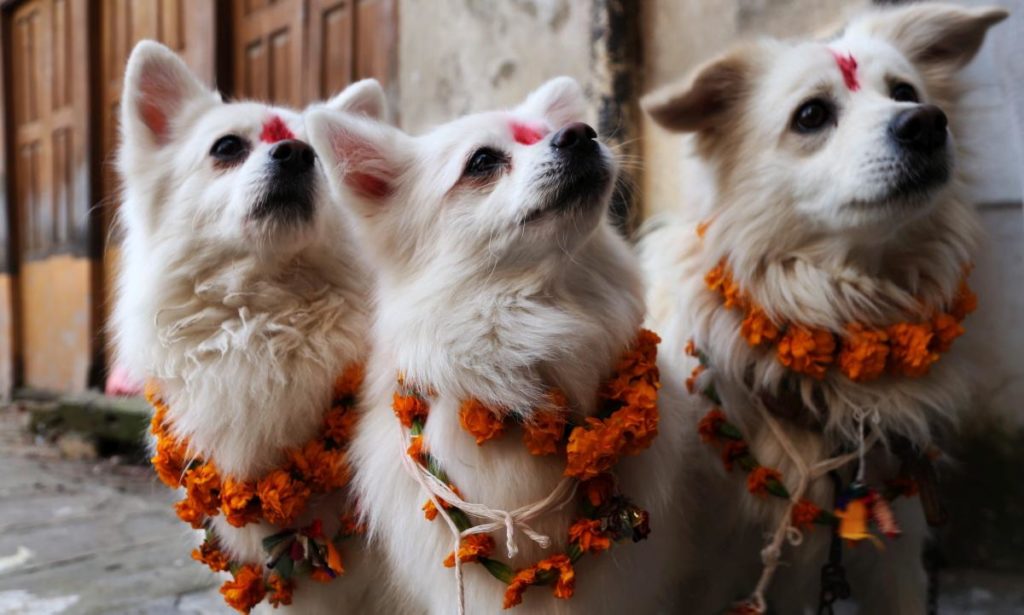
After a gap of 15 days from the conclusion of Dashain celebrations, is celebrated Tihar festival. It goes on for five days. Crows are the messengers of Yama, and the first day of the festival is devoted to them. Yama is the bringer of death.
The 2nd day of the festival is devoted to dogs, which are said to be the custodian of Yama. For the third day, cows are worshipped in the morning.
And during the evening time, Diwali or Deepavali is observed by praying to Goddess Laxmi, the Goddess of wealth and money.
Oxen is vital for this as people pray to it on the 4th day, and Govardhan Puja is done in the evening whereas 5th day is Bhai Tika.
It is the day when sisters put Tika on their brother’s forehead, praying for their good health and longevity.
3. Lhosar
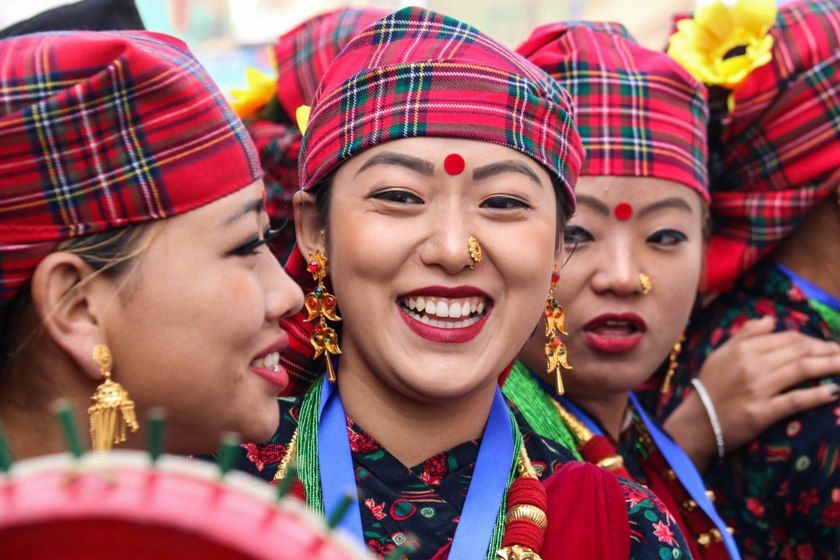
It is the new year for people who follow the Buddhist religion. Although other communities also celebrate it at separate times during the year. And due to this, it is observed three times.
Tamu Lhosar, Sonam Lhosar, and Gyalbo Lhosar are the names given to the Lho sar festival. Reading prayers and decorating the homes is one of the practices along with cultural proceedings.
Gurung community celebrates Tamu Lhosar, Tamang and Yolmo communities have their own Sonam Lhosar.
Gyalbo Lhosar is the festival celebrated by the Sherpa and Tibetan communities. Females irrespective of age wear new dresses. People have their meals together and also dance to express their happiness for the new year.
4. Mha Puja
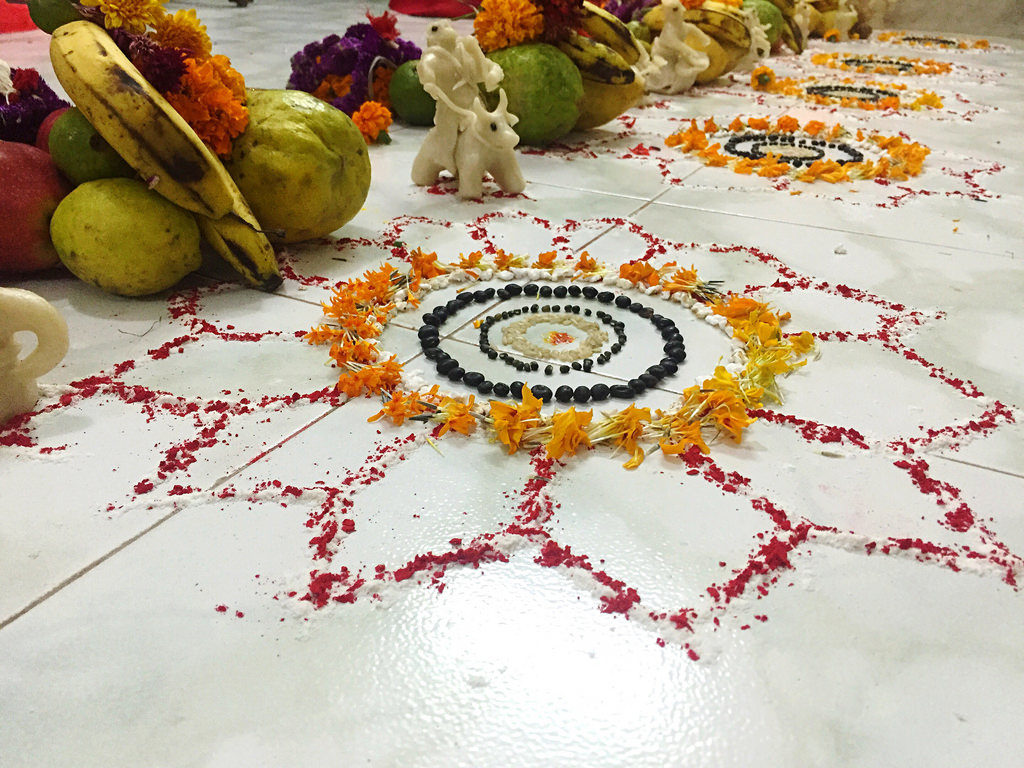
As a number of communities coexist in the country, so does its traditions and beliefs. One such instance happens on the 4th day of Tihar.
When the people are busy celebrating Govardhan Puja, Newar community celebrates Mha Puja. Mha Puja marks the beginning of a new year for them according to Nepal Sambhar.
The Newar community shows their gratefulness towards the body in which they live, during this Puja. The ritual is performed to purify and empower the soul and body of oneself.
Members of a family sit in a row, with a circular shaped sacred diagram called Mandalas drawn in front of them. After performing a few proceedings, the Mandalas is lit to purify it.
5.Buddha Jayanti
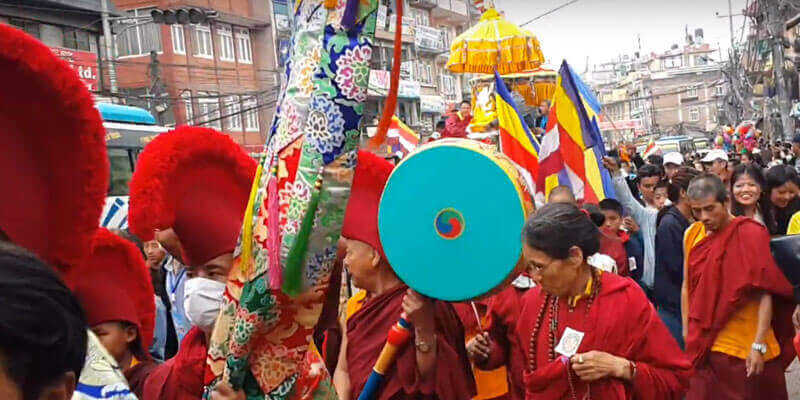
Buddha Jayanti is celebrated to commemorate the birth anniversary of Gautam Buddha who was born in 563 BC in Kapilvastu, Lumbini.
It falls on the first full day of the first month as per the Hindu lunar calendar. On this day people pay a visit to Boudhanath, Lumbini or other stupas and monasteries.
Monks, nuns, and followers of Buddha read prayers and share the instances from the life of Gautam Buddha.
It is a delightful sight to see the shrines and stupas decorated with lamps. Lumbini and Boudhanath are the significant places to visit and to see the celebrations at a grand level.
6. Fagu Purnima
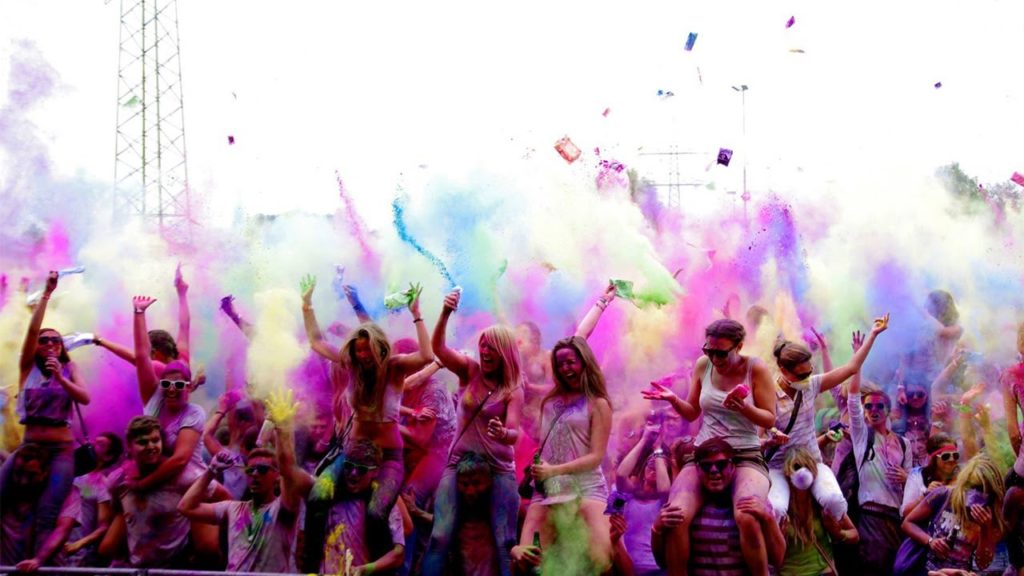
Popularly known as Holi throughout the country, it is the festival of colors. It falls in between February or March.
The people of the hilly region celebrate it on the full moon day whereas Terai region does it on a subsequent day.
The celebration of Fagu Purnima involves playing colors and water as well. People apply colors to each other and wish them happiness in the coming year.
In the evening they pay a visit to friends and families with sweets and put a Tika on their forehead. The visits create a sense of brotherhood and harmony among the people.
It is known to be celebrated to mark the death of ‘Holika, who tried to kill a devotee of Lord Vishnu named Prahlad.
She sat with him in the fire, but she got burnt to death whereas Prahlad walked out of the light, unharmed after the fire extinguisher.
The festival also depicts the onset of the spring season. The season is considered to be very pleasant as flowers blossom. And during the day time, slight warmth is present.
7. Chhath
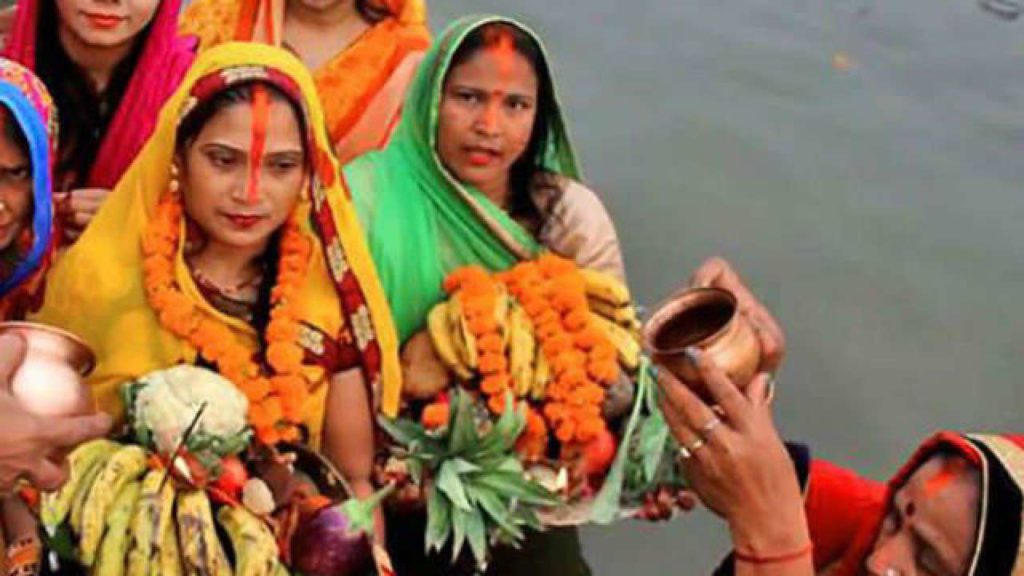
The festival is devoted to Sun God and is celebrated in October or November. The people of Mithila are most interested in it and is an equally important festival for the Terai people.
Apart from performing the rituals, the people also fast for four days while it lasts.The idea behind it is to thank the Sun God for nurturing and nourishing life on the Earth.
The worshippers also pray for longevity and good health of their family members. People worship the Sun God by offering water when the sun sets in the evening and again the next morning when it rises.
They give and take a holy bath in the water while worshipping the Sun God.
8. Teej
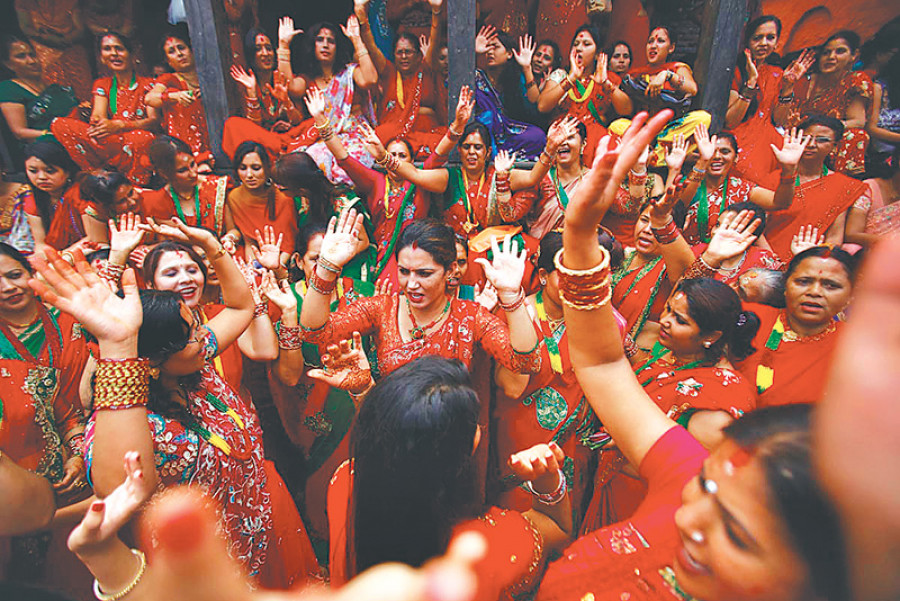
A festival which is for the pure and loving relationship between husband and wife falls in September/October.
The women pray for a healthy, prosperous, and long life of their husband. The celebration involves worshipping Lord Shiva during this festival.
On the one hand, married women pray for the wellness of their husbands, and on the other hand, the single ones pray for getting a good husband.
It strengthens the bond between the married couple, and that it also purifies the body and soul of the entire family.
Women dress up in red saree and get together to celebrate the day together by singing and dancing. Friends and families visit each other for this occasion.
9. Bisket Jatra
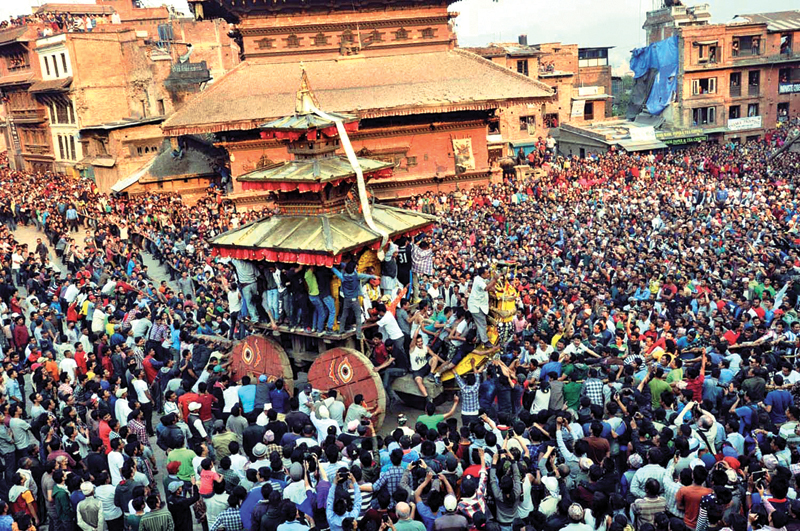
Jatras are long processions wherein the deities sit in chariots and move from one part of the city to the other.
For doing it, chariots are used, which are also called “raths.” Mascots are also used depending on the God or Goddess being in the chariot.
Bisket Jatra falls in the first month of the Nepalese calendar. A major holiday is observed in the country on the occasion of Bisket Jatra and is a significant festival in Bhaktapur in Nepal.
The story or myth which follows the festival depicts that there was a princess whose husband used to die on the wedding bed.
Not one but it happened with several people who married her. After that, a prince who was believed to be blessed by Goddess married her.
He found a pair of serpents crawling out of the princess while she slept and killed them.
Lord Bhairav and Goddess Bhadrakali are essential during this festival. The chariots with their idols move across the city.
The festival is also famous by the name of Bisyau Jatra. Children offer sweets to their mother to show their gratitude and respect to them.
The ones whose mothers have passed away do so by taking a holy bath in Mata Tirtha and making offerings to their mother’s memory.
10. Ghode Jatra
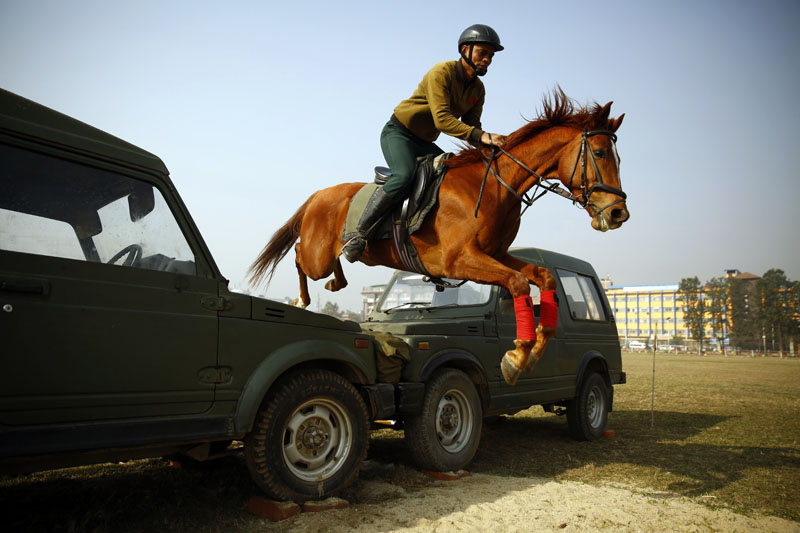
It is more of a horse parade which takes place during the Chaitra month according to Hindu mythological calendar.
It means in the month of March-April. Ghode Jatra also plays a vital role in bringing the people of the valley together. Although there is no religious story or background behind this, still it is considered quite valuable.
Even when the religious element is missing, the people worship deities of Bhadrakali, Kankeswari, and Bhairav on this day.
It is celebrated to ward off the demonic spirit of Gurumaa. According to stories, his soul still lives under the ground at Tundikhel. And to prevent its mind or soul from rising again, a horse race or parade is conducted each year by the Nepal Army.
The parade ensures that the spirit does not return from the burial site. Other than the parade, Nepal Army also undertakes other sports and events.
It involves athletics and acrobats too. Newars community from the valley take very much interest in the Ghode Jatra. Many high ranking officials from the army also take part in it.
Final Conclusion:
As far as festivals are concerned, each one of them has absolute importance. Some of them mark the victory of good over evil; others may be rituals to prevent any mishap.
However, all of these are equally important and hold a separate place in the eyes of the people. It teaches people to be respectful not only towards their religion but also towards the faiths and beliefs of others.